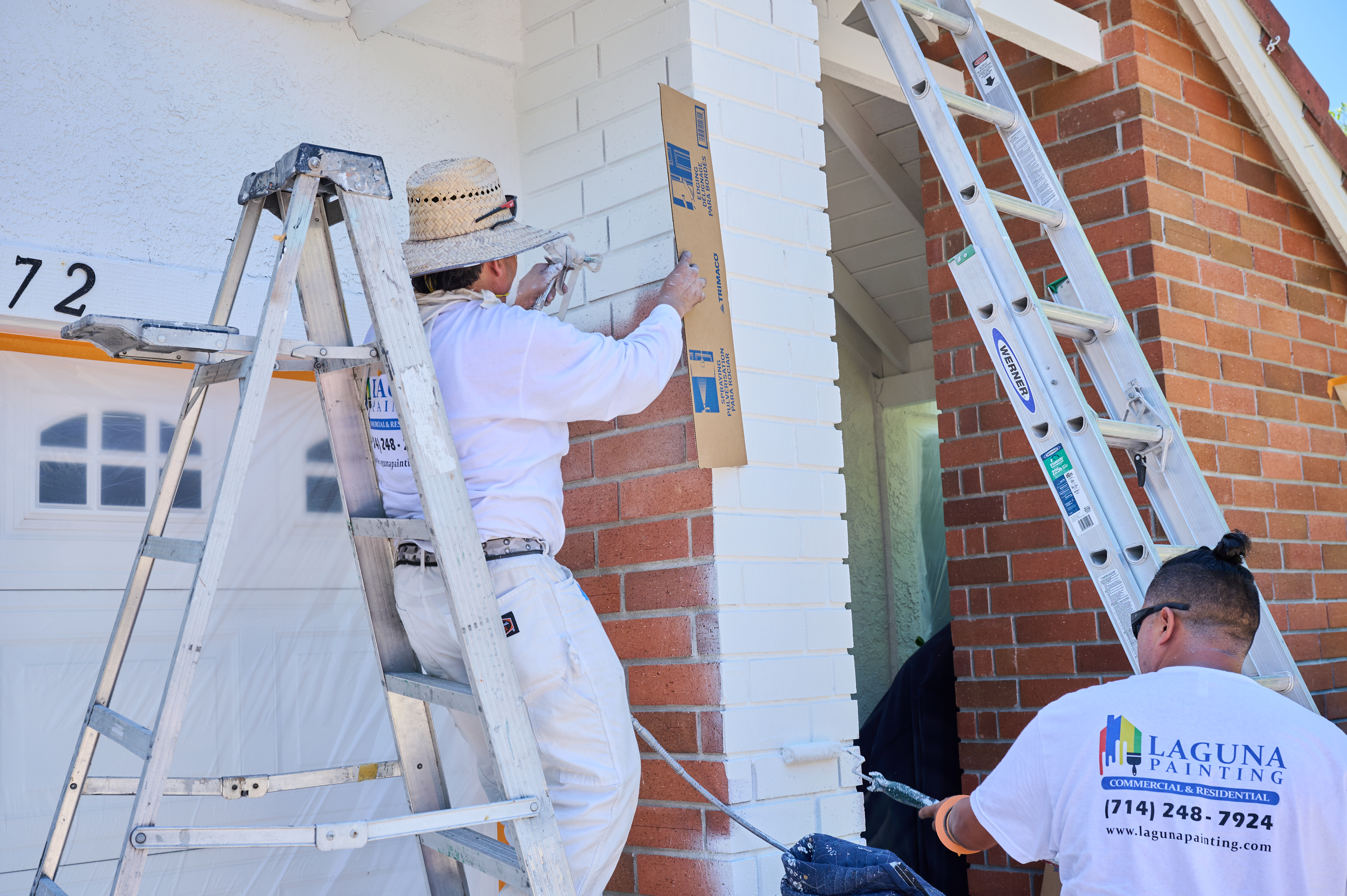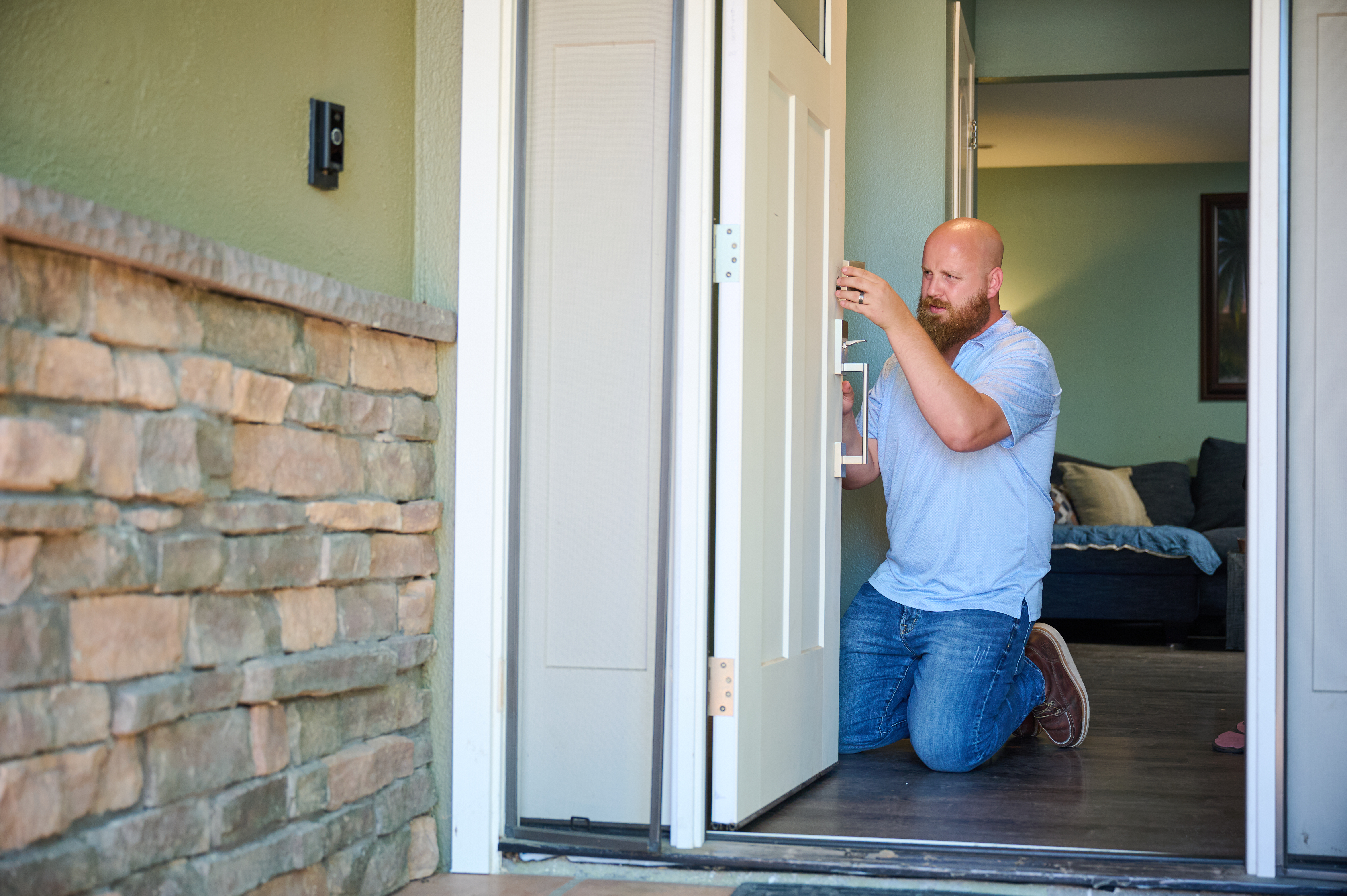
Sandblasting is a powerful method to remove paint, primer, and other coatings from hard surfaces. Learn the cost to rent a sandblaster and the factors involved.
Give your home a facelift with this DIY garage door update


Looking for a home improvement project that won’t take weeks, a hefty budget, or a team of pros? Updating your garage door with a fresh coat of paint will instantly improve your curb appeal, and you can easily do it yourself with a few handy supplies and this step-by-step guide.
Depending on the size of your garage door, you can likely complete this project in a day or two. It’s an affordable project too—the cost to paint a garage door on your own ranges from just $65 to $155 on average. Just remember to factor in plenty of drying time for your garage door paint—and keep a close eye on the weather.
Before you start painting your garage door, check the weather.
The best painting weather is between 50 and 75 degrees Fahrenheit, with low humidity and limited direct sunlight. Try to find two or three consecutive days of cool, dry weather so both coats of paint have plenty of time to dry.
The best paint for your garage door is going to depend on a handful of factors, but mainly what material you’re working with and what kind of effect you’re trying to achieve. For starters, you’ll quickly realize that there’s a difference between how to paint a metal garage door and another type like wood.
For metal, oil paint is the best option because it won’t cause early rusting like water-based paints latex and acrylic might. Similarly, choose a flat finish over a gloss or semi-gloss if you’re working with wood.
Taking the time to prep your garage door will guarantee a high-quality paint job.
First, put on your gloves, mask, and safety goggles.
Use a wire brush to scrape the garage door and remove any dust, dirt, rust, or chipped paint.
After brushing the entire door, use fine-grit sandpaper to sand the door.
Washing your garage door before painting may seem time-consuming, but it will help the paint adhere to the door more easily for a smooth, seamless finish.
Liberally spray the closed garage door with an all-purpose cleaner.
Use a sponge to scrub the door gently, taking care not to apply too much pressure.
Stubborn stains may require another light pass with your wire brush.
After removing all the dirt and grime, rinse your garage door.
Wipe the door down with clean rags and let it air dry for an hour or two until the surface is totally dry.

Exterior paint is just as messy as interior paint. To prevent extra clean-up, use painter’s tape and drop cloths to cover the surrounding area.
Tape off the garage door frame and any keypads, handles, or locks with heavy-duty tape.
Use drop cloths or plastic to cover your driveway and garage floor.
You’ve done most of the heavy lifting and it’s almost time to paint. But first, disconnect your garage’s automatic opening mechanism. Doing so will allow you to open and close the door manually as you prime and paint.
Stir your exterior primer thoroughly, then pour a small amount into a clean paint tray.
If your garage door has insets, prime these panels first. Use a small amount of paint to prevent drips and ensure a smooth finish.
Next, use your brush or a paint roller to paint the rest of the door panels. Remember to paint between the garage door panels, too.
Once you’ve covered the door and wiped away any drips or splatters, let the primer dry for about 12 hours.

After your primer has dried completely, it’s time to finish the job. Start with your garage door open and begin painting the bottom panels first. Then, slowly lower the garage door to paint the middle and upper sections. Finally, use a step stool or ladder to paint the top.
Paint flat surfaces with a roller. A small roller makes paint jobs a breeze. Make sure you don’t overload the roller, though. Otherwise, you’ll have to clean up drips.
Use a brush for recessed or obscured parts. Once you’ve covered most of your garage door, take a step back to survey your work. Depending on the design, you may need to use a paintbrush to get even coverage in all the nooks and crannies.
If you’re struggling to get even coverage with a roller or paintbrush alone—maybe because of the intricate paneling on your garage door—don’t forget that spray painting is an option, too. This method famously makes it easier to reach tough-to-get spots, and produces reliably consistent results.
You can almost cross this project off your to-do list. But first, take a close look at your paint job. Allow the paint to dry overnight before opening your garage door to prevent any scuffs or scrapes.
Leave the painter’s tape in place and allow the first coat to dry for 12 hours. If you notice any uneven patches or hints of the old color, you may need to apply a second coat. Then, apply the second coat and let it dry overnight as well.
Several factors go into the cost of painting a garage door, starting with whether you hire a pro or do the job yourself. Other factors include:
Paint type: Oil-based paints are slightly pricier than acrylic and latex paints.
Materials: Rollers, brushes, a paint sprayer, and painter’s tape will increase your DIY budget.
Door size: Painting costs $1 to $4 for every square foot of the garage door.
Door condition: You must fix chipped, flaking, or dented garage doors before painting.
If you have time and a high attention to detail, you could take this on as a DIY project and save on labor costs (typically $25 to $100 per hour). That said, this project will likely take you longer than it would a professional exterior painter, and there could be added complications if you need to remove a lot of existing paint. The average cost to paint a two-car garage door is between $120 and $500.
Kristin Salaky and Derek Rose contributed to this article.
From average costs to expert advice, get all the answers you need to get your job done.

Sandblasting is a powerful method to remove paint, primer, and other coatings from hard surfaces. Learn the cost to rent a sandblaster and the factors involved.

The cost to sandblast your home’s exterior or another surface on your property depends on the method and the materials you use. Learn more with this guide.

Painting a brick house typically costs between $1.40 and $4.20 per square foot. Your total cost will depend on where you live and the finish you use.

Whether you opt for low-luster or high-gloss depends on budget, skill, aesthetics, and material. Learn how to pick the best sheen for exterior paint projects.

The best time to stain a deck is when it’s dry but not too sunny. How often you restain a deck depends on climate and wood type, but every two to three years is normal.

Painting your front door involves proper preparation, primer, and several coats of paint. Here's everything you need to know about how to paint a front door.